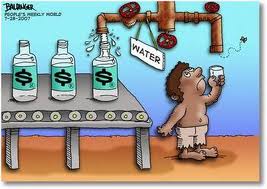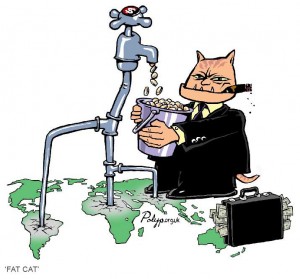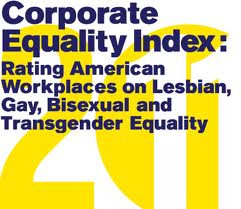El otro día que estaba sentada en mi clase de Economía Política, mi profesor dio una respuesta muy sencilla de por qué surgen diferencias de desarrollo económico entre países: LAS INSTITUCIONES. Por supuesto, esta respuesta no es una epifanía, sino que más bien es una realización de lo que algunos países realmente carecen. Quizás no pensemos en ello aquí en los EE.UU. debido al sistema estable y continuo que tenemos en las instituciones. Sin embargo, esto se vuelve mucho más opaco cuando pensamos en los países que no pueden implementar soluciones reales a problemas reales por la falta de estas instituciones. Uno de estos problemas es el agua, que el Sexto Foro Mundial del Agua discutió la semana pasada. Después de escribir mi blog anterior sobre lo que el Sexto Foro podría traer, mire hacia los efectos consecuentes del foro y qué  soluciones sostenibles podrían estar flotando alrededor. El lema del Sexto Foro fue “Es tiempo de soluciones y compromisos”, pero lo que más encontré de los resultados de este foro fueron ideas sobre soluciones y sobre compromisos. Pero son estas ideas las que necesitan iniciativa para que se materialicen en soluciones exitosas. Lo que creo que falta y lo cual muchos líderes enfatizan son respuestas prácticas.
soluciones sostenibles podrían estar flotando alrededor. El lema del Sexto Foro fue “Es tiempo de soluciones y compromisos”, pero lo que más encontré de los resultados de este foro fueron ideas sobre soluciones y sobre compromisos. Pero son estas ideas las que necesitan iniciativa para que se materialicen en soluciones exitosas. Lo que creo que falta y lo cual muchos líderes enfatizan son respuestas prácticas.
Muchos líderes señalan que respuestas prácticas se pueden encontrar con una administración adecuada en el área de la disposición del agua, con énfasis en las autoridades locales. Como Sulton Rahimov, el primer ministerio de la Secretaría de Mejoramiento & Recursos Hídricos de Tayikistán, señaló: “Si podemos aprender y practicar el manejo básico de la gestión del agua entonces podremos alcanzar a más y más gente”. Lo que debemos subrayar aquí es que esta gestión tiene que venir de las autoridades locales que están dispuestas a poner en práctica políticas realistas sobre recursos hídricos y en el sector de la sanidad.
Vamos a dar un paso atrás. Hemos llegado al punto donde ya hemos dicho claramente todas las quejas sobre la falta del agua potable y la necesidad de soluciones y compromisos como el Sexto Foro indicó. Muchas personas también han reconocido que cuesta producir el agua potable y que cada gobierno debe ser responsable de esto. Pero en cuanto más y más ideas se producen en un esfuerzo de encontrar la mejor respuesta, más tiempo se pierde en vez de producir proyectos prácticos que se necesitan alrededor del mundo.
La idea de que los mecanismos institucionales desempeñan un papel importante en el desarrollo económico es cierto, especialmente en sectores como de recursos hídricos y del agua potable. Sin embargo, la solución no es encuentra tan simple como en una palabra. Las soluciones de cada problema local que cada país tiene sobre el agua provienen de las necesidades y deseos de los accionistas y de los políticos a nivel local. Como Hamilton Karugendo, que trabaja para la Compania EMBU de Agua y Saneamiento en Kenia, dijo: el accionista es el consumidor principal, y ya no podemos darnos el lujo de seguir hablando de teorías e ideas (mientras tantos sufren), al contrario tenemos que ser prácticos y tomar medidas. Las ideas que el Sexto Foro ha traído dicen que se necesita tomara acciones practicas y colectivas al nivel local, un perspectiva de trabajar de abajo hacia arriba que Mats Karlsson de Suecia (director del Centro para la Integración Mediterránea) explicó puede comprometer a las autoridades locales de una manera diferente. Karlsson resume lo que creo que la mayoría de los líderes están de acuerdo en, pero lo cual no están realmente escuchando:
“A veces nos perdemos en la política de este o aquel país, la migración y otros problemas, pero tenemos que darnos cuenta que somos un espacio económico común. Y cuanto más podemos hacer para proveer este fondo y fuerza institucional, más gente surgirá que realmente instituya cosas buenas de esto- más de lo que los procesos internacionales puedan”
Es esta afirmación en las instituciones que está llevando a los líderes a crear soluciones sostenibles. Ahora debemos preguntarnos cuánto de esto se aplica realmente en los gobiernos locales; como muchos han dicho en el Sexto Foro, las tecnologías y soluciones teóricas están ahí, pero ¿cómo podemos aplicarlas?
Creo que una gran idea que he visto salir del Sexto Foro viene de David Winberg, un becario de investigación para el IIASA de Austria. Él describió un modelo de hipótesis (que puede ser cuantificado) que puede mejorar las decisiones entre los accionistas ??y los politicos. Lo describió como un mecanismo que demuestra distintos modelos de posible opciones y es capaz de capturar las ideologías necesarias para producir decisiones que les guste a los accionistas. Esto permite una comunicación y un mejoramiento en el modelo que finalmente es lo que se llevaría a cabo como política (una especie de método de prueba y error).
Señalo esto porque es fantástico decir que las instituciones ayudan al desarrollo económico y que son herramientas necesarias para legislaciones como en el sector del agua, pero tenemos que mirar más allá de la idea de que todas las instituciones van a funcionar. En efecto, creo que la razón porque muchas de estas ideas se quedan en papel se debe al riesgo que las personas no están dispuestas a tomar—la incertidumbre de si una ley o institución en particular trabajará
Desde luego, no tengo la gran respuesta a nuestro problema del agua. Sin embargo, creo que los gobiernos locales tienen que informarse adecuadamente para poder tomar la mejor decisión para sus propias comunidades. Aprender por experiencia y los “150 años de la gestión adaptativa”, es lo que los EE.UU. ha estado implementando en relación con el sector del agua. Como John Tubbs de EE.UU. Agua y Ciencia dijo, los EE.UU. fue al Sexto Foro no sólo a reconocer su gran logro, pero también a reconocer las consecuencias derivadas de estos logros. Con las soluciones de la “gestión adaptiva”, que describe Karen Fraser, las respuestas cambian constantemente dependiendo de los problemas que surgen. De esta manera se les da una gran cantidad de autonomía a los gobiernos estatales a través de las dotaciones federales a los estados para la mejoría en la construcción de la infraestructura hidráulica.
¿Es este ejemplo de los EE.UU. el mejor y el único referente a la eficacia institucional? No. Pero si ha implementado muchas de las ideas en las cuales la mayoría de los líderes están de acuerdo: las instituciones locales, la gestión adecuada y el compromiso local, y la ejecución de todas estas ideas. ¿No es hora de que los gobiernos locales tomen medidas?
















